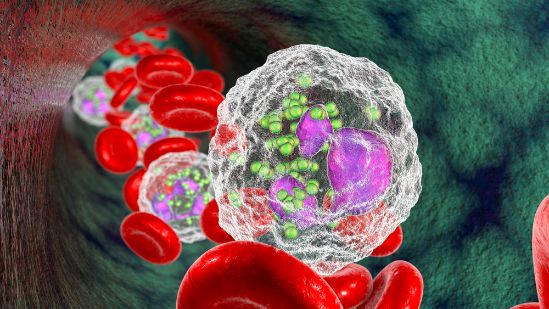Metastasis is the spread of cancer from the site where it first formed to other parts of the body. When cancer cells break away from the original tumor, they travel through the blood and lymph systems to settle and grow in new places in the body, such as in other organs or bones. The new, enlarged tumors are called metastases.
Almost any type of cancer can spread to other parts of the body. However, the term metastatic carcinoma is typically used to describe cancer that has spread from a solid tumor (such as a breast or prostate) to other parts of the body.
The process of cancer metastasis occurs when cancer cells break away from the primary tumor, enter the blood or lymph system, evade immune attack and extravasate into nearby tissues and organs. The most common sites of metastasis are the liver, lungs and bones. Cancer can also spread to the brain and other soft tissue.
When cancer spreads, the cells that grow in the new location are still the same at the molecular level as the cells that originally formed the tumor. Because of this, the cancer is still considered the same kind of cancer as the original tumor and is treated the same way. For example, if breast cancer spreads to the liver, it is diagnosed and treated as lung adenocarcinoma that has spread to the liver.

Some people with metastatic cancer have no symptoms and their health care team may only be able to detect the presence of the tumor by doing laboratory tests that check samples of blood or other fluids or by using imaging tests, such as CT scans. A biopsy may be done, especially if the patient’s history suggests that the disease has spread to other areas of the body.
Treatment for metastatic adenocarcinoma focuses on controlling its growth and relieving symptoms. The types of treatments used depend on the type of cancer, where it spread and other factors, such as the person’s age and general state of health. Some cancer treatments can slow or even stop the spread of cancer by making conditions less suitable for the formation of new tumors, such as by blocking the growth of blood vessels that nourish them.
Some patients with metastatic adenocarcinoma can be cured. But most people with this type of cancer are not cured, and their tumors will continue to grow and spread. Many of the treatments used to control metastatic cancer can help reduce pain, improve quality of life and prolong survival by controlling or limiting symptoms. Treatments for metastatic adenocarcinoma include surgery, chemotherapy, radiation therapy and medications that interfere with the growth or spread of cancer, such as hormone therapies or targeted drug therapy. A combination of these treatments is often needed to get rid of all the cancer that remains after the initial tumors have been treated. This approach is known as systemic therapy. It is more effective than single-drug treatment.










